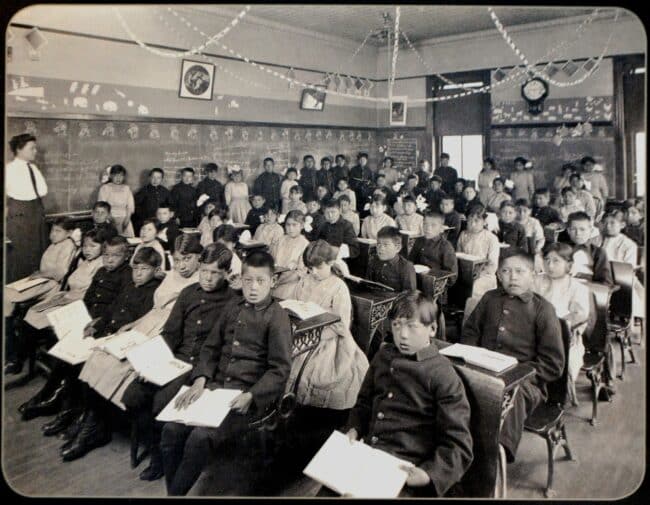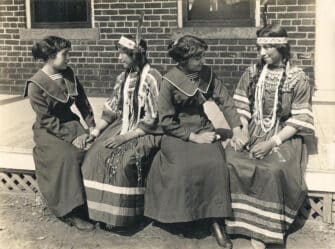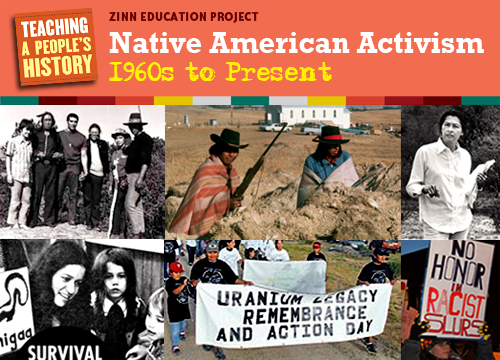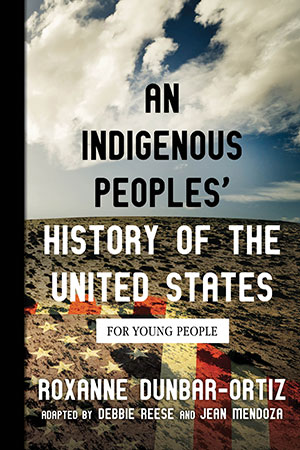
Students at the Genoa Indian School in 1910. Source: Genoa Indian School Industrial Museum via Wikimedia
The Indian Industrial School of Genoa, Nebraska, was opened on Feb. 20, 1884, as the fourth non-reservation boarding school established by the Office of Indian Affairs. Similar to other “Indian boarding schools” around the country, the Genoa Indian Industrial School was established to forcibly assimilate Indigenous students to Christianity and “European-American culture.” Genoa was chosen as the site of the school because the federal government already owned the buildings that existed on what was once the Chahiksichahiks (Pawnee) Reservation. The confederated Pawnee bands of Kitahahki, Chaui, Skidi, and Kitkenhahki had been forced to leave their reservation and relocate to present-day Pawnee County, Oklahoma, when the Nebraska Territory was opened for U.S. settlement in 1879.

Women at the Genoa Industrial School in 1910. Source: Genoa Indian School Digital Reconciliation Project
Nebraskan government officials, with the support of the federal government, began forcing Indigenous youth who lived nearby to attend the school, but soon expanded to include Indigenous students from 10 states and 40 different nations. The school started off with 74 students but grew as large as 599.
In 2021, researchers used ground-penetrating radar to confirm that at least 102 children died at the school, but the unofficial death toll is significantly higher. These deaths were caused by suicide, influenza, tuberculosis, heart failure, and “accidental” shootings. The school was eventually closed in 1934 due to a lack of funding brought on by the Great Depression.

An iron working class in the blacksmith and wagon shop in 1910. Source: Genoa Indian School Digital Reconciliation Project
In 1990, local volunteers created the Genoa U.S. Indian School Foundation. The foundation bought the Manual Training building, which is now on the National Register of Historic Places. This site now acts as the Genoa U.S. Indian School Museum.
In 2017, the Genoa Indian School Digital Reconciliation Project was created as “a space for telling the stories of the American Indian children who attended Genoa, the stories of their communities, and the stories of their descendants.” The Project — which involves a group of government officials, local professors and academics, tribal officials, and community members — is digitizing government records of Genoa from federal and state archives and returning these records to tribal nations that were affected by this school. You can browse their extensive collection of records here. The Project also aims to support descendant communities in telling stories of the school and promoting awareness of the history of Indian boarding schools more broadly in the United States.
This story was prepared by May Kotsen, an intern with the Zinn Education Project in summer 2022.








Twitter
Google plus
LinkedIn